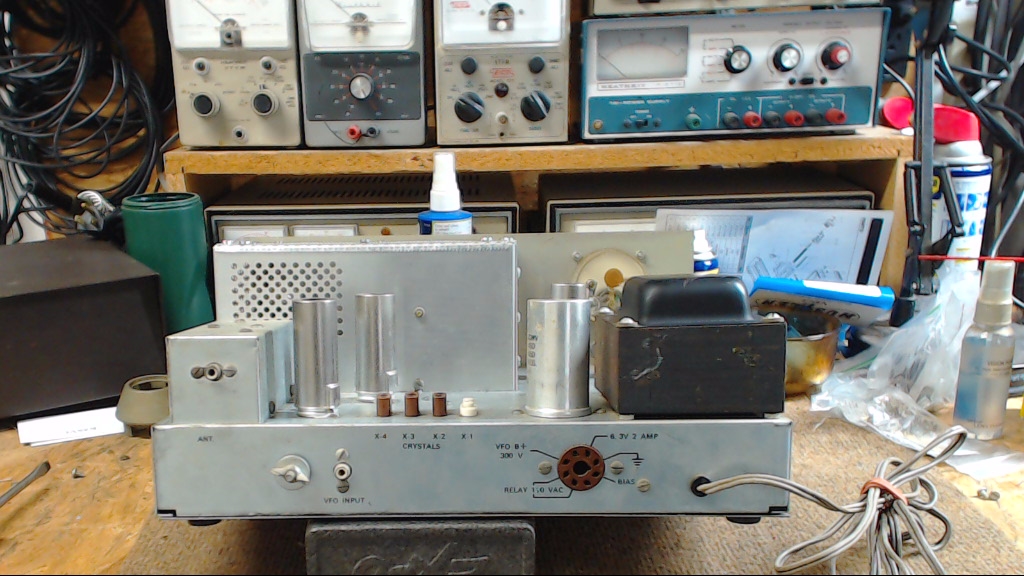Heathkit DX-60A Second Edition
Restoration
This is my new addition, a 1967 Heathkit DX-60A in very good physical condition. I picked it up on eBay last week for a very reasonable price. The following are BEFORE clean-up and AFTER clean-up pictures.
BEFORE
(eBay pictures)
Front View
The meter sticks and meter cover is discolored/dirty. The bottom cover and the final amplifier enclosure cover plates were missing.
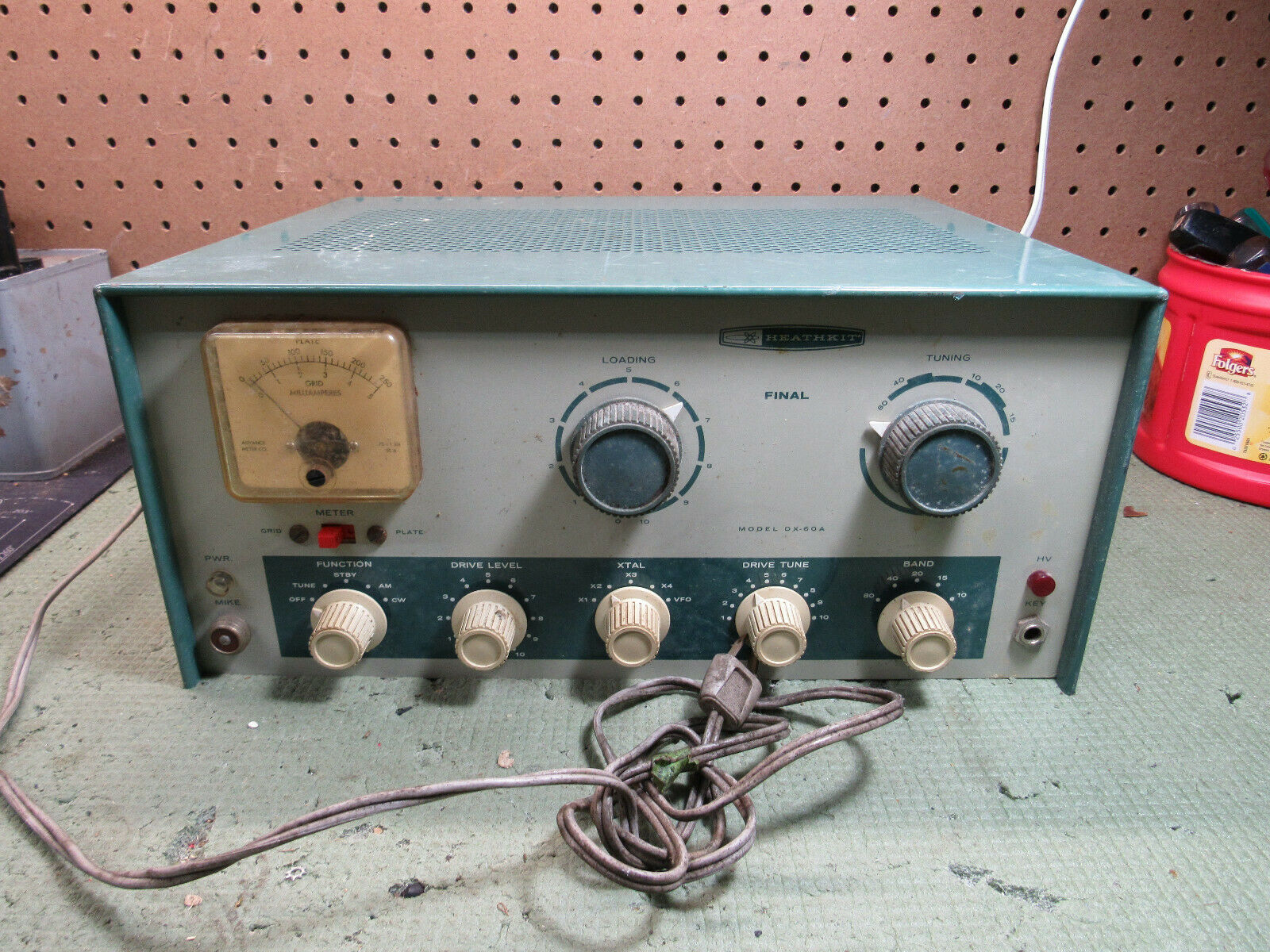
Top View
The final amplifier enclosure cover plate is missing and has a lot of dust and some discoloration on the chassis. The tube shields are dirty as is the power transformer.
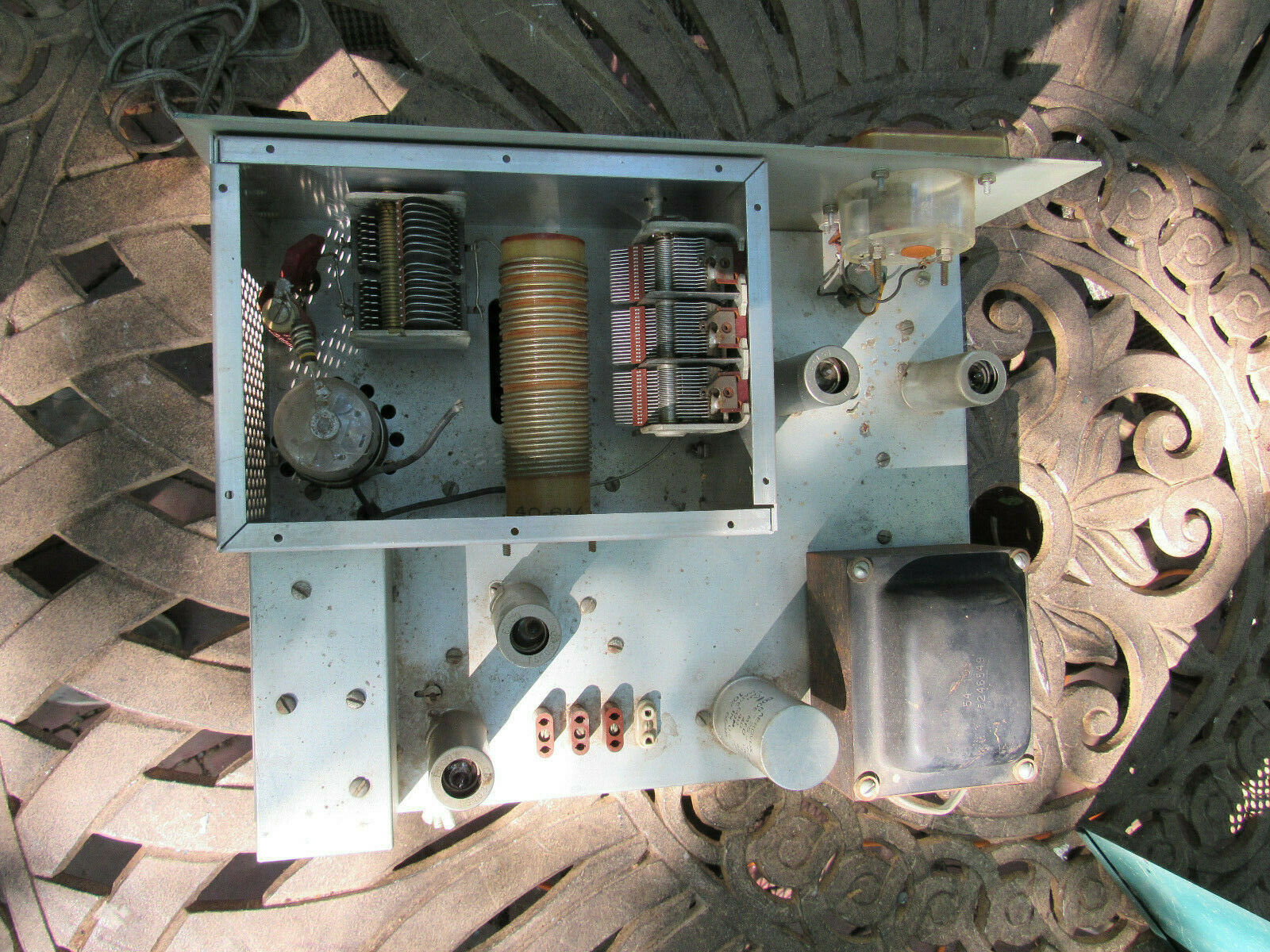
After
(My pictures)
The meter cover was removed and the meter pointer was found to be scrapping on the meter scale. I gently bent the meter pointer outwards which solved the sticky meter. I tested the meter with my Heathkit FET Volt/Ohm meter, worked fine. I cleaned the meter cover with 409 and my finger. Rinsed the cover and it looks 100% better. Cleaned all the knobs with 409 and a brush then rinsed with clean water. Cleaned the front panel and the top cover with Armor-All.
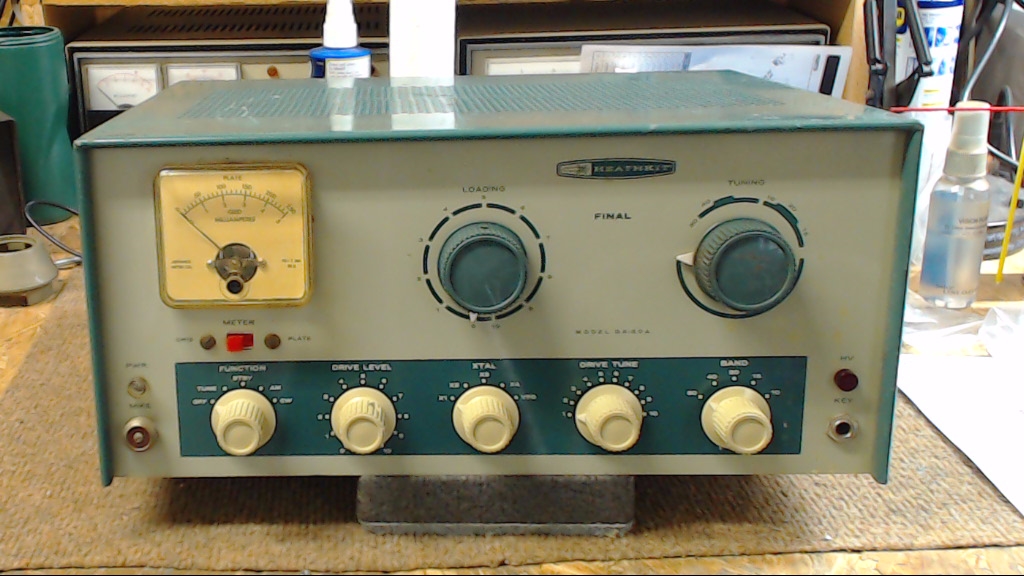
Inside Top View
The chassis cleaned up rather well with 409 and a brush. I scrubbed the tube shields with steel wool, made them look shiny. Made a final amplifier top cover out of perforated aluminum cut to the size. The final amplifier top cover was missing so I fabricated a cover using perforated aluminum. New #6-3/8 sheet metal screws secured the replacement cover to the enclosure. The power transformer was scrubbed with Armor-all and a brush, cleaned up nicely. The chassis was scrubbed with a brush and 409 then rinsed with clean water.
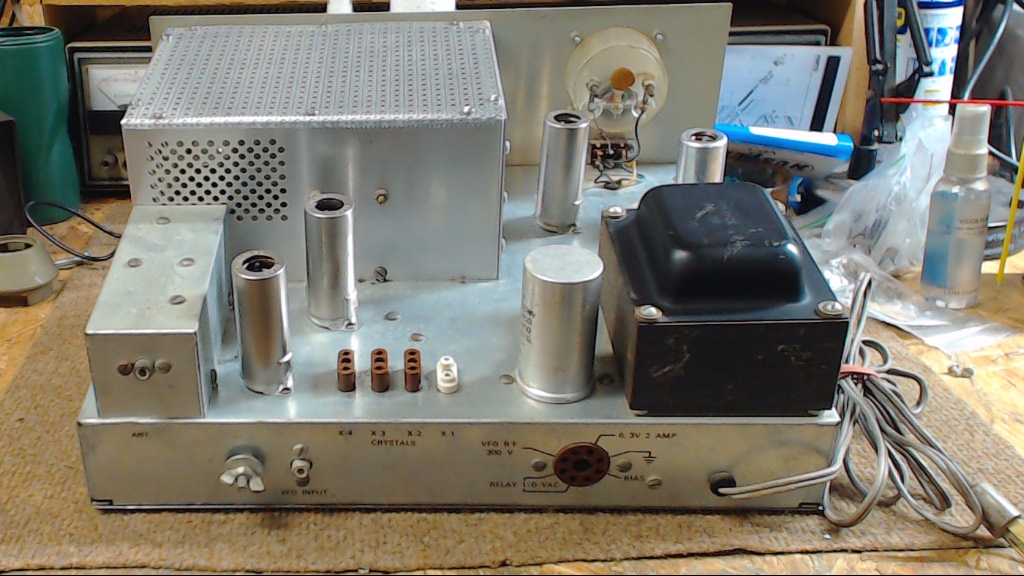
Bottom View (latest update)
I have since upgraded the power supply with the Hayseedhamfest.com DX-60A to DX-60B Upgrade capacitor kit. This is not shown in the picture as the upgrade was performed after the picture was taken.
The first problem was the transmitter would not key in TUNE, PHONE, and CW mode. I also noticed the power transformer would have a slight hum when keyed that would continue to hum in a key-up state until the Function switch was put in STBY. The hum issue was traced to a bad 6146. The loss of keying problem was traced to a wire on the rear Octal socket pin #8, it was not soldered. After soldering the wire I could key the transmitter in TUNE, PHONE, and CW mode.
The next problem was the PLATE variable capacitor would not dip the final amp plate current on any band. This could be caused by loss of RF drive BUT that wasn’t the problem as I had a good GRID meter display and I was able to adjust the DRIVE control for 2.5ma or more peak indication in TUNE mode. This indicated strong RF drive. The DRIVE pot reduced the GRID current to 2.5ma. The high plate current problem was traced to the Band Switch ceramic wafer, it was installed “backward”. This resulted in the final amplifier’s PI Network taps were not selected properly resulting in the final amplifier would not tune to resonance on any band.
Update 22 Oct 2021
The band switch problem has been fixed. I removed the band switch, disassemble the switch wafer from the de-tent, rotate the switch wafer 180 degrees, then reassemble it onto the de-tent. The PI Network taps, the fixed disc cap, and the ground switch were connected. The DX-60A now works and produces 50 watts on 80 thru 20, 25 to 30 watts on 15, and 20 watts on 10. The evidence clearly indicated the transmitter had “never worked” with the band switch wafer wired 180 degrees backwards. Another indication the builder did not pay attention to what he/she was doing.
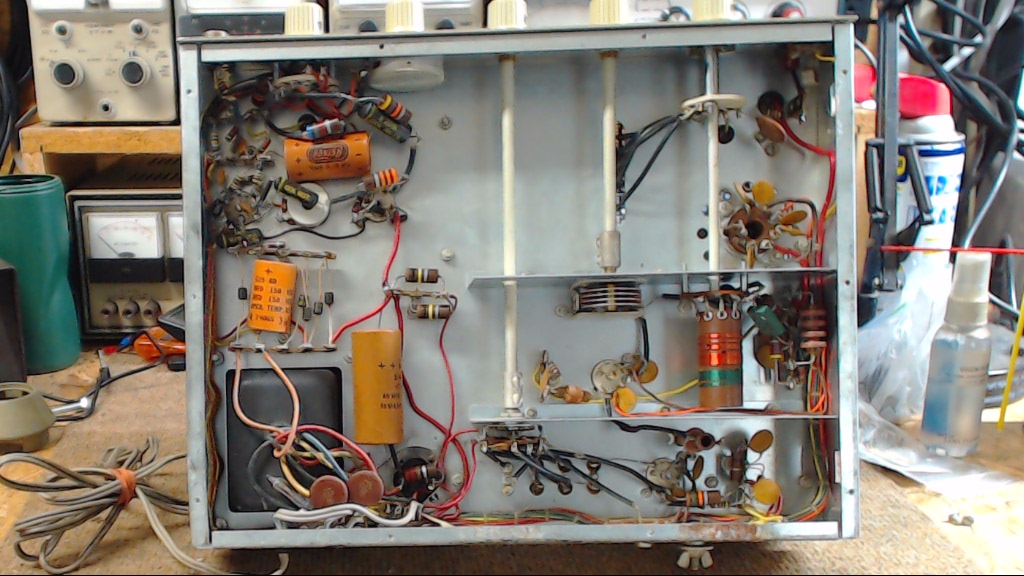
Rear Apron
The rear apron socket/connectors appear to be in very good physical and electrical condition. The labels are clear and there appears to be no physical damage to the labels due to rubbing with fingers. The wiring harness is complete, not hacked. The 2 blade power cord will be replaced with a new 3 wire grounded power cord. The picture below is BEFORE the power supply can capacitor was replaced.
